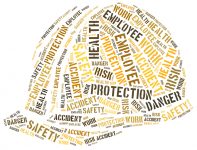Category: Special Topics in Safety Management
Safety is a process, and as such, needs to be managed. This section offers resources to create a viable safety program, sell it to senior management, train supervisors and employees in using it, and then track and report your progress. Look also for ways to advance your own skills in these areas, both for your current job, and those that follow.
Safety professionals have long been advised to integrate safety into overall business operations rather than to make it a stand-alone function. According to the European Agency for Safety and Health at Work, “…sound OSH management, integrated into an organization’s overall management and business, is one of the main success factors to ensure improvements in workers’ […]
Small businesses accounted for more than 60 percent of net new jobs created between 1993 and mid-2013 in the United States. In recent years, very small firms—those in the 20- to 499-employee category—have led job creation. But they face compliance challenges. Here are some resources that can help small businesses play up. The primary challenge […]
Small business fuels the American economy. The U.S. Small Business Administration (SBA) defines a “small business” as an independent company with fewer than 500 employees. According to the SBA, there are about 28 million such companies, which represent about 49 percent of private sector employment. Being a small business shouldn’t keep you from thinking big […]
Are the benefits of your safety program functions and performance undervalued because of communication barriers? Are you effectively measuring the performance of your program—and communicating that performance to managers in language they can understand? Keep reading for tips on how to use the tools of business managers and the format and language of the organization’s […]
You’ve got an ambitious agenda for moving your safety process forward. You’ve done the research, and you know your ideas are sound. Now how do you communicate the value of your agenda to decision makers who hold the purse strings? Keep reading for the strategies you need to succeed. You became a safety professional because […]
Carpenter Severiano Barajas was pushing wood through a jointer on May 7, 2012, when the piece he was cutting became stuck. Barajas wiggled the piece back and forth, trying to work it free. While he was doing so, the glove he was wearing on his left hand caught on the jointer’s blade, became entangled, and […]
Have you ever used a string trimmer to trim the edges of your yard? How about using a chainsaw to clean up dead tree limbs after a storm? Maybe you’ve used a power sander to refinish the floors in your home. After each of these activities, you might have experienced tingling and numbness in your […]
A worker at a Wisconsin cheese factory lost two fingers in an amputation incident in January 2013. The worker was operating an unguarded cheese packing and labeling machine. When OSHA investigated the incident, it discovered that a similar amputation had occurred a year earlier. According to OSHA, the amputations could have been prevented by the […]
Usually, if you’re not subject to the program requirements of a standard, you’re not subject to its recordkeeping requirements, either. Bloodborne pathogens exposure is an exception. You may not be required to have a bloodborne pathogens exposure control program, but OSHA’s recordkeeping standard requires all employers to keep records of sharps exposure incidents, and some […]
Tomorrow, July 28, is World Hepatitis Day. According to the World Health Organization, 400 million people worldwide are currently living with hepatitis B and C, and 1.4 million die of these diseases each year. OSHA is taking workplace exposures to bloodborne pathogens seriously. On June 25, the agency issued enforcement guidance for inpatient healthcare settings […]










